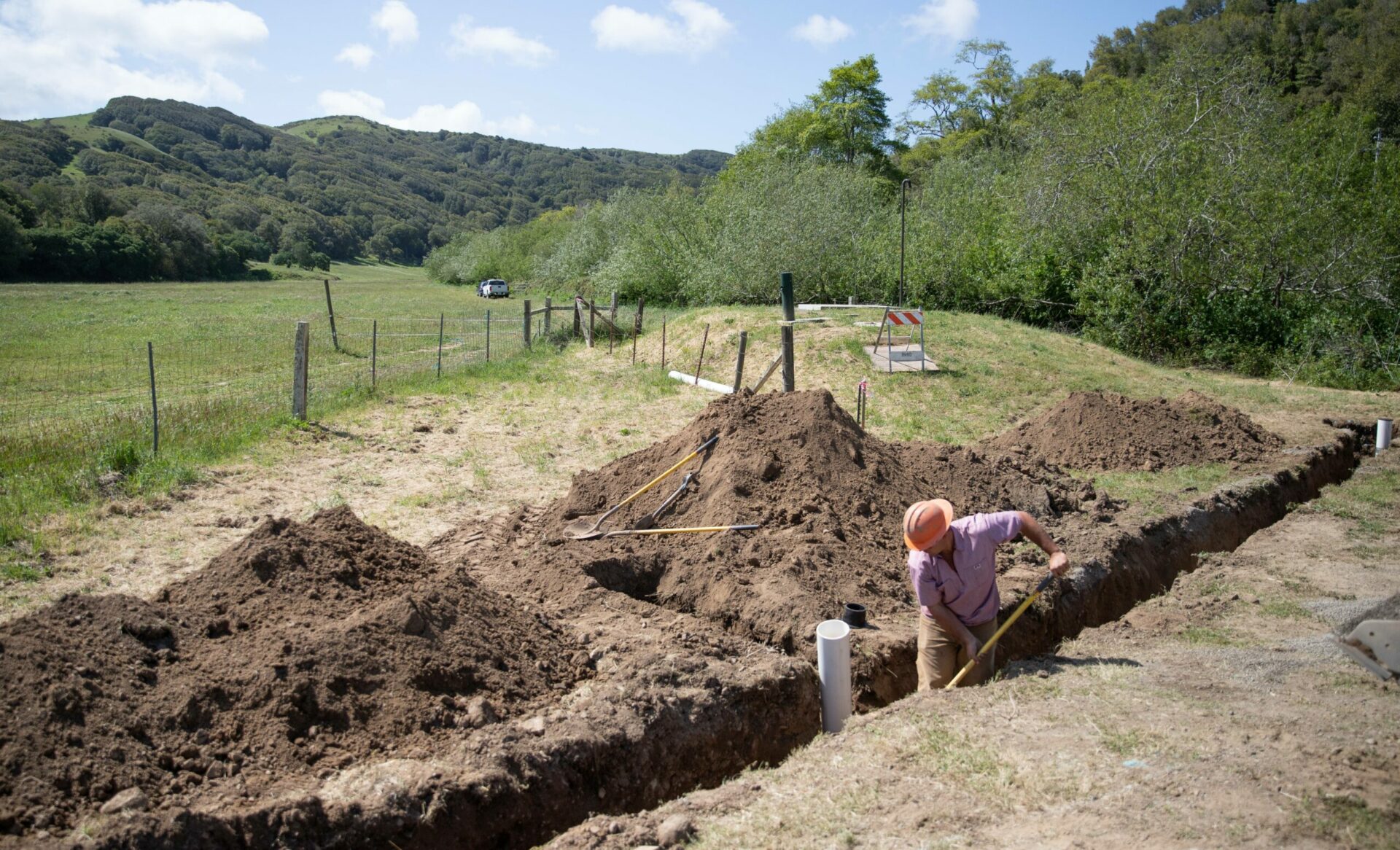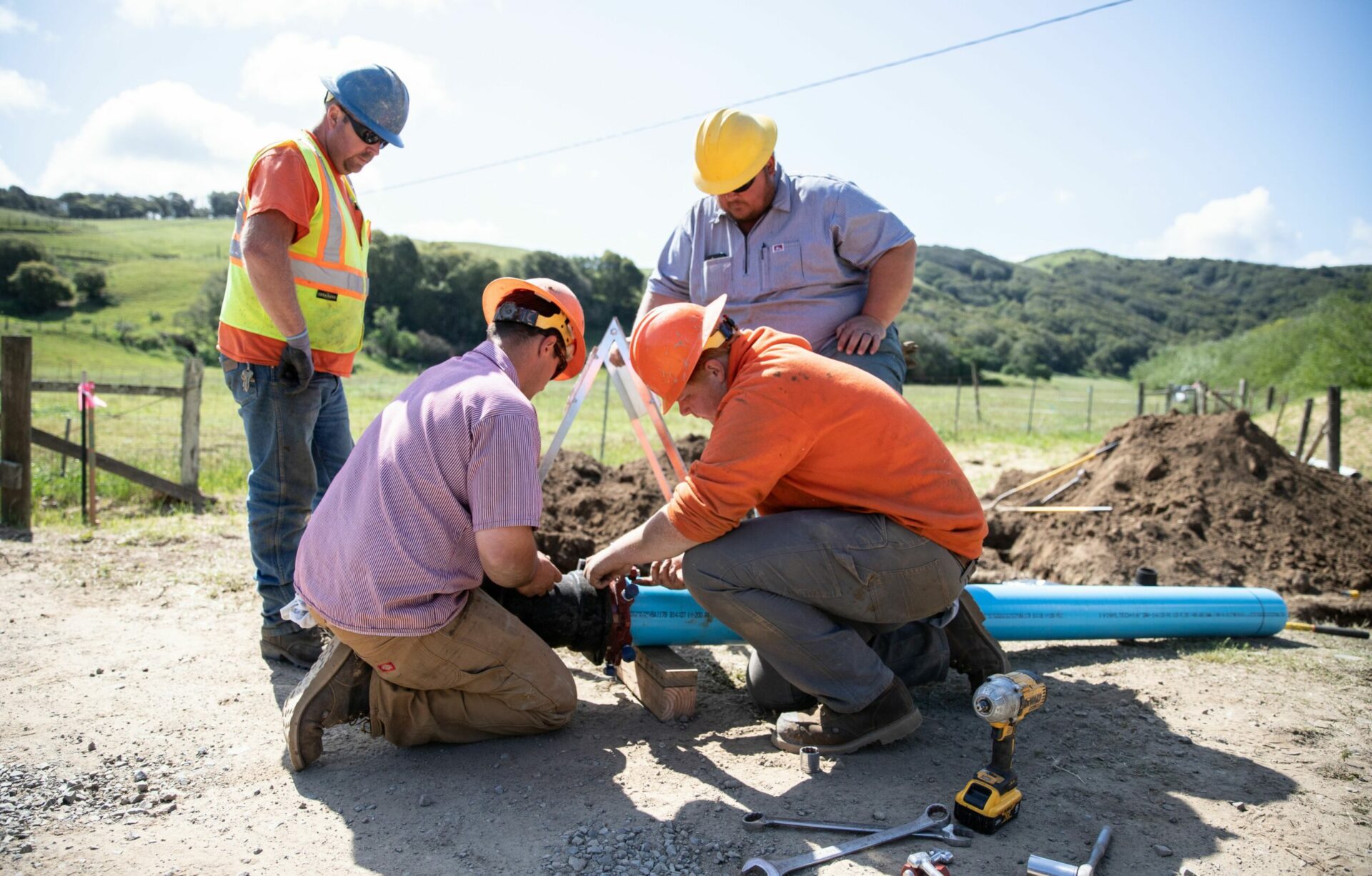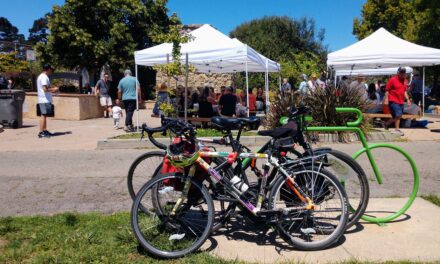Sinking and Sharing a New Well
Construction is wrapping up on a new well in Marin County that will supply drinking water to Point Reyes Station, Olema, Inverness Park, Paradise Ranch Estates, and Bear Valley. It will also allow the North Marin Water District to transition away from its dependence on aging wells that are situated in places where seasonal high tides (and rising sea level) can cause increased salinity in tap water.
And the new well continues a ranching family’s commitment to sharing its water wealth.
To build the well, the water district activated language in an agricultural conservation easement to secure the land along Lagunitas Creek, which is part of the Gallagher North Bend Ranch.
“We kind of knew, historically, there’s not that many other good sites,” says Tony Williams, the general manager at North Marin Water. The Gallagher ranch was already home to one municipal well, thanks to a relationship with North Marin Water that goes back decades. The family knew a second well might be needed, so while working with the Marin Agricultural Land Trust (MALT) to put a conservation easement on some of their property, the Gallaghers included provisions for a second well.
“It’s a pretty atypical thing for an agricultural conservation easement to have the ability to add a municipal well,” says Zach Mendes, acting director of conservation at MALT. “The water district, MALT, and the family worked together to make sure that the easement language would actually allow for it.”

Ditching connecting lines to the new water source. Photo: Matt Dolkas.
MALT also funded stabilization work along the Lagunitas Creek bank and planting of willows and native grasses through its Stewardship Assistance Program.
Williams expects the well to be completed, permitted and operational sometime this fall, joining the existing Gallagher property well, which has been in operation since 2015. Together, he says, they “will likely become our day-to-day wells.”
Mendes says while unusual, the arrangement ensures the continuation of agricultural operations on the property even as the same land contributes to drinking water into the future.
The Gallagher family has ranched for more than 140 years on 330 acres that include the bend for which the ranch is named, with Lagunitas Creek running through the property. In addition to partnering with the water district on the municipal wells, the family also has a history of generosity with its own well water. During drought conditions last summer, routine testing required them to run their well continuously for ten days. So they captured the water in a large tank and let neighbors come and truck away what they needed for their parched land.
Other Recent Posts
Artist Repurposes Shoreline Detritus
Courtney Griffith scours beaches and parks for everything from plastic to charcoal, mangled ropes and burnt wood to use in her work.
After The Fire: Scenes from Chinese Camp
One of California’s oldest Gold Rush settlements takes stock after a devastating fire — a photo essay.
Youth Group Tackles Heat Islands in Santa Rosa
A new youth advisory team convened by the Greenbelt Alliance and Latino Service Providers is exploring heat disparities in southwest Santa Rosa.
ReaderBoard
Once a month we share reader announcements: jobs, events, reports, and more.
CEQA Reforms: Boon or Brake for Adaptation?
California Environmental Quality Act updates may open up more housing, but some are sounding alarms about bypassed environmental regulations.
Repurposing Urban Lots & Waterfronts: Ashland Grove Park, Palo Alto Levee, and India Basin
In this edition of our professional column, we look at how groups are reimagining a lot in Ashland Grove and shorelines in San Francisco and Palo Alto.
Backyard Harvests Reduce Waste
A Cupertino Rotary Club program led by Vidula Aiyer harvests backyard fruit and reduces greenhouse gases.
Digging in the Dirt Got Me Into Student Climate Action
A public garden at El Cerrito High School in the East Bay inspired my love of nature and my decision to study environmental science at UCLA.
King Kong Levee: Two Miles Done, Two To Go
Two miles of levee are now in place as part of the project to protect Alviso and parts of San Jose, but construction will last much longer.
Making Shade a Priority in LA: An Interview with Sam Bloch
After witnessing fire disasters in neighboring counties, Marin formed a unique fire prevention authority and taxpayers funded it. Thirty projects and three years later, the county is clearer of undergrowth.










